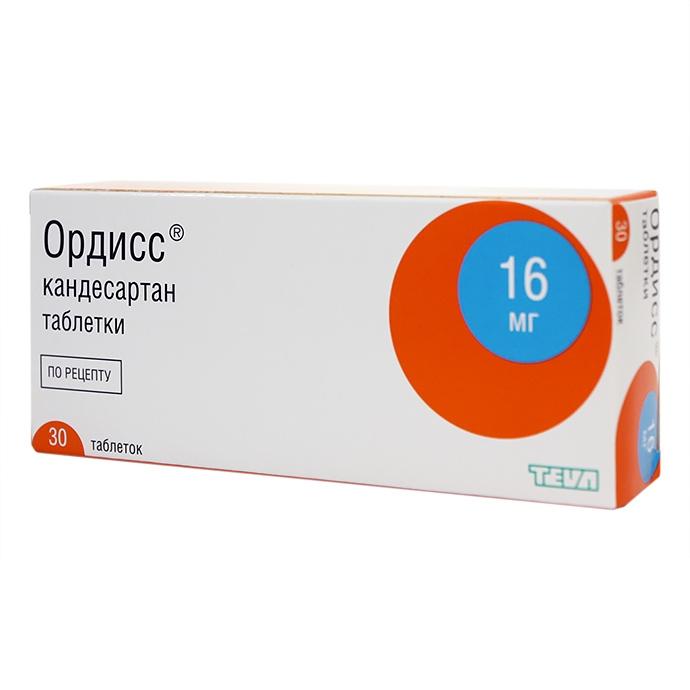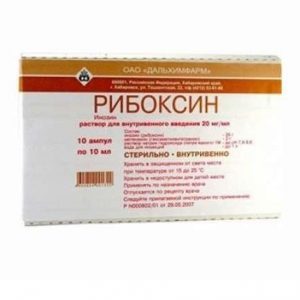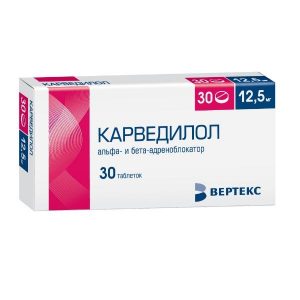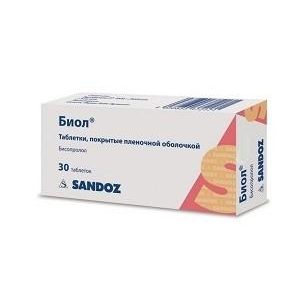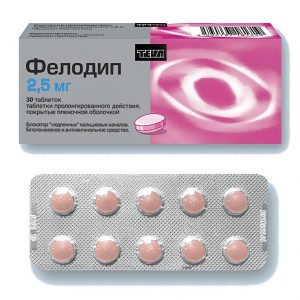Description
Release form
Tablets weighing 16 mg
Packing
Pack of 30 pcs
Pharmacological action
Antihypertensive agent, angiotensin II receptor antagonist. It blocks AT1 receptors, which leads to a decrease in the biological effects of angiotensin II (mediated by receptors of this type), including vasoconstrictor effect, stimulating effect on aldosterone release, regulation of salt and water homeostasis and stimulation of cell growth. The antihypertensive effect is due to a decrease in OPSS without a reflex increase in heart rate.
Does not inhibit ACE. Does not interact and does not block receptors of other hormones or ion channels, which are important for the regulation of the functions of the cardiovascular system.
Indications
Arterial hypertension.
Chronic heart failure and impaired systolic function of the left ventricle (left ventricular ejection fraction (LVEF) not more than 40%) as an additional therapy with ACE inhibitors or with intolerance to ACE inhibitors.
Contraindications
Hypersensitivity to candesartan and other components of the drug lactose intolerance lactase deficiency glucose-galactosia malabsorption syndrome severe hepatic impairment and / or cholestasis pregnancy lactation infant children under 18 years of age with concurrent diabetes mellitus kidneys (CC less than 60 ml / min).
Composition
1 tablet contains:
active substance: candesartan cilexetil 8.0 mg / 16.0 mg / 32.0 mg
excipients: pregelatinized starch 3.75 mg / 7.5 mg / 15.0 mg poloxamer 188 0.5 mg / 1.0 mg / 2.0 mg povidone-KZO 4.0 mg / 8.0 mg / 16.0 mg dye iron oxide red (E172) 0.075 mg / 0.15 mg / 0.3 mg calcium carmellose 1.65 mg / 3.3 mg / 6.6 mg microcrystalline cellulose 17.5 mg / 35.0 mg / 70.0 mg lactose monohydrate 43.725 mg / 87.45 mg / 174.9 mg magnesium stearate 0, 8 mg / 1.6 mg / 3.2 mg.
Dosage and administration
Inside, regardless of food intake, 1 time per day.
Arterial hypertension
The recommended starting dose of Ordiss® is 8 mg once daily. Patients who require a further decrease in blood pressure (BP) are recommended to increase the dose to 16 mg once a day. The maximum antihypertensive effect is achieved within 4 weeks from the start of treatment. The maximum daily dose is 32 mg / day. If, against the background of treatment with Ordiss ®, adequate blood pressure control is not achieved, it is recommended to add a thiazide diuretic to therapy.
In elderly patients, there is no need to adjust the initial dose of the drug.
In patients with reduced BCC, there is a risk of developing arterial hypotension, therefore, treatment with the drug should be started with a dose of 4 mg / day (1/2 tablet 8 mg).
In patients with renal failure. When used in patients with mild or moderate renal failure (CC at least 30 ml / min / 1.73 m2 of body surface area), the initial dose is 4 mg / day (1/2 tablet 8 mg).
Clinical experience with the drug in patients with severe renal failure (CC less than 30 ml / min / 1.73 m2 of body surface area) is limited. In these cases, consideration should be given to starting treatment with a dose of 4 mg / day (1/2 tablet of 8 mg).
In patients with impaired liver function. When using the drug in patients with impaired liver function of mild to moderate severity, an initial dose of 2 mg / day (1/4 tablet 8 mg) is recommended. If necessary, an increase in dose is possible. Clinical experience with the use of the drug in patients with severe impaired liver function and / or cholestasis is limited (see section Contraindications).
Ordiss® can be used in conjunction with thiazide diuretics (for example, hydrochlorothiazide), which leads to an increase in the hypotensive effect.
Chronic heart failure (CHF)
The recommended starting dose of Ordiss® is 4 mg once daily (1/2 tablet 8 mg). Increasing the dose to 32 mg once a day or to the maximum tolerated dose is carried out by doubling it at intervals of at least 2 weeks.
Ordiss® can be used in conjunction with other drugs used for heart failure, for example, with ACE inhibitors, beta-blockers, diuretics and cardiac glycosides.
Special patient groups
Elderly patients, patients with renal failure or impaired liver function do not need to change the initial dose of the drug.
Side effects
The frequency of side effects is classified according to the recommendations of the World Health Organization: very often – at least 10% often – at least 1%, but less than 10% infrequently – at least 0.1%, but less than 1% rarely – not less than 0.01%, but less than 0.1% very rarely – less than 0.01%, including single messages.
From the blood and lymphatic system: very rarely – leukopenia, neutropenia, thrombocytopenia, agranulocytosis.
On the part of the immune system: very rarely – skin rash, itching, urticaria, angioedema.
From the nervous system: often – dizziness, headache, weakness.
From the respiratory system: often – respiratory infections, pharyngitis, rhinitis.
From the gastrointestinal tract: very rarely – nausea.
From the cardiovascular system: often – a pronounced decrease in blood pressure.
From the liver and biliary tract: very rarely – increased activity of hepatic transaminases, impaired liver function, hepatitis.
From the side of the musculoskeletal system and connective tissue: very rarely – back pain, arthralgia, myalgia.
From the side of the kidneys and urinary tract: often – impaired renal function (see section Special instructions).
Lab performance: very rarely – hyperkalemia, hyponatremia, increased creatinine concentration, hyperuricemia, decreased hemoglobin.
Other: very rare – exacerbation of the course of gout, flushing of the face.
Overdose
Symptoms: an analysis of the pharmacological properties of the drug suggests that the main manifestation of an overdose may be a clinically pronounced decrease in blood pressure, dizziness. Some cases of drug overdose have been described (up to 672 mg of candesartan), ended in recovery of patients without serious consequences.
Treatment: with the development of a clinically pronounced decrease in blood pressure, symptomatic treatment is necessary and the patient’s condition should be monitored. Lay the patient on his back and raise his legs. If necessary, bcc should be increased, for example, by iv administration of a 0.9% solution of sodium chloride. If necessary, you can apply sympathomimetic agents. Excretion of candesartan by hemodialysis is ineffective.
Storage conditions
Store in a dry place at a temperature not exceeding 25 ° C.
Keep out of the reach and sight of children.
Term hodnosty
2 years
Conditions of dispatch from
pharmacies Prescription
lekarstvennaja form
tablets
Teva Pharmaceutical Enterprises Co., Ltd. Israel
